Best Home Battery Backup and Solar Storage Systems
Top Solar Batteries and Energy Storage Systems
In this post, we have listed the best solar battery storage solutions. The storage systems are categorized according to size and whether they integrate an inverter. Besides, the article throws light upon such questions as types of batteries, their advantages and disadvantages, things to consider, and others.
See also: Storage News | Top Energy Storage Batteries Stocks | Best Solar Storage Products | Top Energy Storage Companies | Top Energy Storage Batteries ETFs
Solar Batteries
The use of solar power to generate energy and electricity for domestic use is taking the world by storm. However, there are some challenges faced by solar power consumers; a major challenge is the efficient use of solar energy. The energy generated by the solar powers is at times more than what the consumers require, making the energy go to waste. But then, at times when sunlight is absent, for example at night time or during seasons with very little sunlight, consumers have no way to generate electricity from solar energy.
In addition to this, the amount of solar energy generated globally is very insignificant to the enormous amount of solar energy that is available. If there were means to store all this renewable energy, the world could easily eliminate the environmental damage caused to the globe due to the burning of fossil fuels.
To solve this problem, the concept of batteries for solar energy was created. Simply put, solar battery storage is a type of reservoir that keeps the excess solar energy generated in itself. This excess energy is then utilized at times where real-time solar energy is insufficient and unavailable, such as nights, winters, or power outages.
ESS
Energy Storage System (ESS) is a device that is used to bridge the gap between dynamic energy supply and demand. The ESS stores the energy generated to be used in the future. The main components of an ESS are:
- Energy Source: This is the most obvious part of the storage system, to store energy, one needs an instrument to create energy. The most common source of energy that is used within the ESS is solar energy. Solar panels are, therefore, used to convert sunlight into electricity, particularly DC electricity. DC is the favorable type of current to be stored as it is convenient for domestic and commercial regions.
- Inverter: Inverter is an essential part of the ESS. Although it is much convenient to store electricity in the DC form, in actuality, the devices and electronics used in residences and even commercial shops require AC. Henceforth, for the current to be utilized, a device is required that would convert the stored DC electricity into AC electricity.
- Battery/ Storage Device: The battery is the focal part of the ESS, as it is where the DC is stored, and then utilized later. The most common chemicals that are used to create a battery are lithium-ion or Lithium Iron Phosphate Technology. The main purpose of this component is to transform the energy received from the panel (solar energy) into chemical energy. And when it is time to use this preserved energy, the batter transforms that chemical energy back into electrical energy.
- Energy Monitoring System: Although this component of the ESS is undervalued, it is a very integral part of the system. The ESS has a sensor that supervises the entire functioning of the ESS, starting from the daily supply of energy from the panel, to the daily consumption of energy from the ESS. The system alerts the consumer of any discrepancy or malfunction that could take place.
ESS History
The current Energy Storage System Program took many decades to evolve into what it is today. The program was started by the US Department of Energy in Sandia National Laboratories. Initially, its purpose was to develop energy storage for the nuclear stockpile. But in the mid-1970s, when the US encountered serious concerns about the oil crisis, alternatives to oil were needed to sustain production. It, therefore, became the responsibility of Sandia’s Laboratory to research the matter and to create a more sustainable energy source.
Later, in the next decade, the DOE decided to further expand the role of Sandia. In addition to creating new sources of energy, now Sandia also had the Exploratory Battery Development and Testing (ETD) Program. Under this, Sandia had the responsibility to devise a way that would store energy for later use. It is important to note that at this time, the concept of energy storage was not domestic but for national purposes. In 1991, this program was again progressed and called the Utility Battery Storage (UBS) Program. At this point, the program had evolved into a proper battery storage research program and had started to test various commercial products that included utility or electricity storage. This was not achieved independently by Sandia the goals were achieved by partnerships with other organizations such as the International Lead- Zinc Organization and the Electric Power Research Institute.
It was in 1996 that ESS finally came into existence, the program aims to bring in innovation in the field of energy generation and storage. Moreover, it attempts to expand its implications towards the commercial and domestic sides. To serve this purpose the EDD program is being funded with nearly $190 million by the Department of Energy.
The Decreasing Cost of Solar Power Storages
Solar power has become the best way to generate electricity because of its relatively low cost and renewable nature. On the other hand, solar power batteries are generated to store large amounts of energy for future use. Yet, some people are still concerned with the costs associated with storing solar energy, thinking that it would be too expensive.
Installing a solar panel along with power storage is a brilliant idea, one can avoid the high electricity costs, and reduce their carbon footprint. But a rational consumer will always consider the monetary costs associated with doing so. The good news is that solar batteries have become significantly cheaper over the years. Not only has it become affordable in itself, but the consumption of solar energy along with its battery has also become cheaper in comparison to the use of coal or fossil fuel. However, there are some important aspects, that a potential buyer must be aware of, that affect the costs of batteries to a great extent.
- The cost of a battery (or any durable product) reflects its quality, therefore, batteries that are of higher quality are more likely to have higher prices. It depends upon the buyer to judge what type of quality they are seeking depending upon their need.
- The battery market has expanded greatly, many different types of batteries are available depending upon a variety of factors that will be discussed later. But this variety can often confuse the customers because it can be difficult to evaluate the size of a battery one desires. The cost of a battery is also directly proportional to the energy storage size of a battery.
- The chemical composition that makes up the battery is also important. Although lithium-ion is the most commonly used chemical, there are two different types within the use of lithium ions that differ greatly. Nickel Manganese Cobalt (MNC) batteries and Lithium Iron Phosphate (LFP) batteries. LFP batteries are comparatively expensive than NMC batteries because of their long durability.
- As mentioned earlier, inverters are important components of an energy storage system, some battery models have built-in inverters, while those without
Data shows that over the decade (2009 to 2019) the price of solar-generated electricity has fallen by 89%. Moreover, due to the intense research and experimentation conducted by the ESS program, the cost of preserving energy has become affordable too. This decrease in price is majorly attributed to the cost of lithium-ions, which is the primary component of a battery. In the US, since the 1990s, lithium ions have observed a great downfall in their price. Starting at a price of nearly $7,523 lithium-ion cells per kWh in 1991, the price was reduced by almost 91% ($655) in the year 2005. And in the year 2018, the price was reduced to $181 which is about 97.6% less than its price in 1991. Henceforth, as technology will continue to improve, the cost of batteries will continue to reduce as well- making it easier and more affordable to purchase solar batteries and reduce the carbon footprint.
The Key Points to Pay Attention to While Choosing a Solar Battery:
1. Usable capacity. Battery capacity is how much energy (commonly expressed in kilowatt-hours) can be stored in a battery. A battery must never be totally discharged, so it is important not to confuse the parameters ‘total’ and ‘usable’ capacity. For example, Powerwall 2 has a total capacity of 14 kilowatt-hours, while the capacity that can be used is 13.5 kilowatt-hours. It cannot be completely discharged, otherwise the cells would be damaged.
2. Warrantied cycles. One battery cycle consists of full discharging and full charging. However, a battery never gets 100% discharged. In case it discharges 50% and then recharges 50%, it is half of a full cycle. Check the number of cycles a battery manufacturer warranties. This way, you can calculate the amount of energy the batt is supposed to provide during its cycle life.
3. Chemistry. The key types of solar batteries are lead-acid and lithium. The former is much cheaper but not as efficient and long-lasting as the latter. That is why, most modern solar batts are made of either Li-ion or LFP, in spite of expensiveness of the material. Lithium-based batteries are long-living and provide much more energy during lifespan. Consequently, their lifetime cost is cheaper compared to lead-acid products.
4. Power output. There are batteries that cannot discharge more than 800 watts of power, while a small domestic appliance like electric kettles requires 2 kilowatts to power. Or in case your solar panel produces 4 kilowatts of power and a battery can store only 3 kilowatts, this would mean 1 kilowatt is wasted by injecting to the power grid. Make sure you have chosen the battery with a proper charge and discharge power to avoid buying much power from the electric grid in spite of having a battery.
5. Price per kilowatt-hour. Prices of different ESSs vary considerably, so it is reasonable to calculate the price per 1kWh of a battery capacity. It is up to you to choose the proper capacity for your home. Keep it in mind that the more energy is stored the less you pay for the electricity, as this allows you to charge at cheaper rate hours and sell back to the power grid during the time of higher rates.
6. Powercut cover. The majority of solar batteries are intended for storing the energy only. But there are storage solutions that can provide backup power in case of outages. If you’d like a battery with a powercut backup, take into account the following two points. Some devices may need removing from the backed-up circuit, otherwise either a device or a battery can be damaged. It would be wise to think of a larger battery that can store more energy in reserve.
7. Type of coupling. DC batteries are connected to photovoltaic modules directly, while an electric meter is required for connecting AC batts. Consequently, you install direct current batteries simultaneously with PV modules, and alternating current batteries are optimal for retrofitting the existing solar array. AC-coupled batts require separate inverters for converting direct current into alternating suitable for domestic usage and back into DC for battery storage. An AC-coupled system is more flexible in terms of location, since the battery can be installed indoors, while inverter requiring a cool temperature can be placed outside the house. However, DC-coupled ESS transfers power more efficiently by 1-3% and the installation is cheaper because only one inverter is needed.
Buy Lifepo4 Home Battery Backup
Some More Things to Consider
Necessary Maintenance
No solar batteries can be just installed and left. In order to provide optimal efficiency and safety, they require to be regularly monitored and maintained. You should keep the battery state of charge optimal, make it ‘power-boosted’ and gassed regularly, and make sure you store it at required temperatures and weather-protected.
Spare Parts
A solar batt is not as long-living as a PV module. The lifespan of modern qualitative batteries ranges from 10 up to 15 years, depending on the way they are used and maintained. Keep it in mind that solar batteries are a considerable expense.
Still Grid-Reliant
Though modern technologies are shifting toward fully autonomous self-sufficient energy solutions, solar batteries do not currently allow disconnecting from the power grid entirely. No battery is secured against a fault, every product has a limited lifespan and other limitations. That is why, for the time being, it is reasonable to be optionally backed-up by the grid.
Solar Batteries and PV Arrays
One does not necessarily need solar modules installed to get a solar battery. You can use a battery as an independent backup solution for the case of an outage. Besides, this can be a money-saving option, if you charge the battery in low-rate hours and use the energy stored when electricity rate is higher. Or one can earn money by selling the electricity accumulated by the battery to the grid.
Top Solar Energy Storage Products
| Supplier | Capacity | Technology | Cycles Warrantied | Warranty | Weight | Operating Temperature | Dimensions (mm) | Mounting | Powercut backup** | Cost* |
|---|---|---|---|---|---|---|---|---|---|---|
| Tesla Powerwall 2.0 | 13.5 kWh | Lithium-ion | n/a | 10 years | 114kg | -20°C to 50°C | 1150 x 755 x 155 | Floor/Wall | Yes | $9905+ |
| Generac PWRcell | 9kWh | Lithium-ion | 2628 | 10 years | 52kg | 5°C to 40°C | 559 x 254 x 1727 | n/a | Yes | $9999 |
| Delta BX | 6.3 – 12.6 kWh | Lithium-ion | n/a | 10 years | 80kg | -10°C to +45°C | 570 x 830 x 250 | Floor | Yes | $7000 |
| Sungrow SBP4K8 | 4.8 kWh | Lithium-ion | n/a | 10 years | 48 kg | -10°C to 45°C | 510 x 565 x 190 | Floor/Wall | No | $2758 |
| Power Plus Energy- LiFe | 2.2-3.3 kWh | Lithium Iron Phosphate (LFP) | 4000 | 10 years | 41 Kg | 0°C to 55°C | 430 x 88 x 620 | Floor/Wall | Yes | $3550 |
| LG Chem Resu | 3.3-13.1 kWh | Lithium-ion | 6000 | 10 years | 31-99.8kg | -10°C to 45°C | 452 x 403 x 120 to 452 x 626 x 227 | Floor/Wall | Yes | $3295+ |
| Sonnen Batterie Eco | 2-20 kWh | Lithium-ion | 10000 | 10 years | 150 – 333.3kg | 5°C to 40°C | 660 x1448 x 406 to 660 x 2133.6 x 406 | Floor/Wall | Yes | $5642+ |
| Powervault 3 | 4.1 – 20.5 kWh | Lithium-polymer/ NMC | >6000 | 10 years | 129 – 329kg | 0°C to 35°C | 97 x 100x 25 to 97 x 100 x 25 | Floor/Wall | No | $5943-$18581 |
| Powervault3 Eco | 4 – 8 kWh | Second-life: LMO | >1500 | 3 years | 129 – 276kg | 5°C to 35°C | 120 x 98 x 25 to 177 x 98 x 25 | Floor/Wall | No | $4712- $6860 |
| Enphase AC Battery | 1.2 kWh | Lithium Iron Phosphate (LFP) | 3650 | 10 years | 23kg | -20°C to 45°C | 390 x 325 x 220 | Wall | No | $2132+ |
| Samsung SDI BMS | 4.8kWh | Lithium-ion | 6000 | 5 Years | 35kg | -10°C to 50°C | 446 X 440 X 158 | Floor | Yes | $4388+ |
| Moixa Smart Battery | 4.8kWh | Lithium-Ion Phosphate – LiFePO4 | 4500 | 10 years *Lifetime with GridShare | 66kg | 0°C to 50°C | 700 x 500 x 200 | Wall | No | $3699– $4326 |
| xStorage by Nissan | 4.2-6 kWh | Lithium-ion | n/a | 5-10 years | 83kg | 0°C to 30°C | 42 x 781 x 175 | Wall | Yes | $3761 |
| xStorage by Nissan | 10.08 kWh | Nickel mangaense cobalt | n/a | 10 years | 83kg | 0°C to 30°C | 42 x 781 x 175 | Wall | Yes | n/a |
| BYD B-BOX LV | 3.5 – 14 kWh | Lithium Iron-Phosphate | 6000 | 10 years | 65-194kg | -10°C to 50°C | 620 x 475 x 320 to 620 x 1183 x 320 | Floor | No | $2131+ |
| Solax Tripple Power Battery | 5.8 kWh | Li-on (LFP) | >6000 | 10 years | 72.2 kg | 0°C to 55°C | 474 x 193 x 708 | Floor/Wall | Yes | $2407+ |
| VARTA PULSE 6 | 6.5 kWh | NMC | 4000 | 10 years | 65kg | 5°C to 35°C | 600 x 690 x 186 | Wall | No | $4487+ |
| Puredrive Energy | 10 kWh | LiFePo4 50V 200A | 10000 | 10 Years | 129kg | -20°C to 60°C | 940 x 1460 x 165 | Floor/Wall | Yes | $4378+ |
| Puredrive Hybrid | 4.8 kWh | LiFePO4 Lithium ion Phosphate | 6000 | 5-10 Years | 79kg | -10°C to 55°C | 810 x 550 x 320 | Floor | Yes | $2172+ |
| *not included installation costs | ||||||||||
Top Full Solar Energy Storage Systems
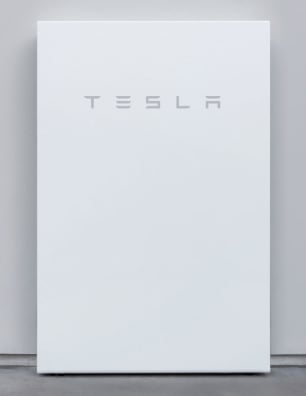 Tesla Powerwall 2.0
Tesla Powerwall 2.0
Tesla Powerwall is by far the best energy storage system considering its high capacity and operating module; however, it is pricey. The system also includes a built-in inverter, which although rises the battery price, reduces the cost of installation.
The battery has a total energy of 14 kWh, with a maximum usable energy of 13.5 kWh. The battery has a peak capacity of 5kWh and has a warranty of 10 years. Furthermore, the battery can easily be installed anywhere, both indoor and outdoor environment is feasible, it can also be mounted on a wall or simply put on the floor.
The battery is made of lithium-ion, and interestingly has three different operating modes: solar self-consumption, time-based control, and backup. Solar self-consumption is best for utilizing the stored energy in the absence of the sun. Time-based control, on the other hand, is for when electricity is charged at different rates throughout the day, time-based control, therefore, is set to utilize stored energy at times when the rate is high, thereby reducing electricity costs. Lastly, under backup, energy is saved for emergency circumstances.
However, the Powerwall, are not sold individually, they must be bought with new solar panels, making it difficult for those with already installed panels to get one. Furthermore, Tesla is infamous for its product warranty service. Buying an expensive battery with poor customer service can be quite risky.
Powerwall 3.0
Elon Musk has unofficially announced the production of Powerwall 3.0. Although there is no official date of its release, the product is said to have a 9.6kW peak capacity as compared to the 7kW peak capacity in its 2.0 version.
Buy Lifepo4 Home Battery Backup
Delta BX 6.3 and 12.6
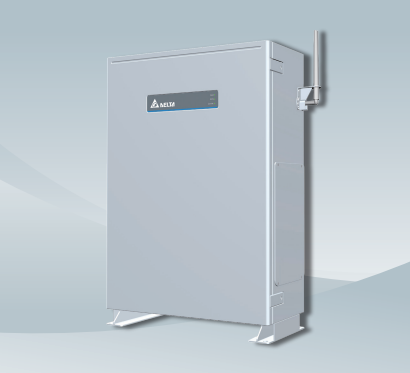
Delta’s recent product BX 6.3 and 12.6 are both Lithium-ion batteries, integrated with an inverter to provide a manageable home energy system.
The BX 6.3 has a total capacity of 6.3 kWh and provides an energy output of 3 kW. The voltage range of the product is 175 - 226.8 V. The BX 12.6, on the other hand, has a total energy capacity of 12.6 kWh and had a power output of 4.5 kW. The voltage range of this battery model is 350 - 453.6V with a maximum current of 20.6 A.
Both models can be scaled up to 12 kWh by adding more batteries in parallel. And proper management software is available to help consumers monitor and manage their solar energy consumption.
Buy Lifepo4 Home Battery Backup
Power Plus Energy- LiFe Premium P series
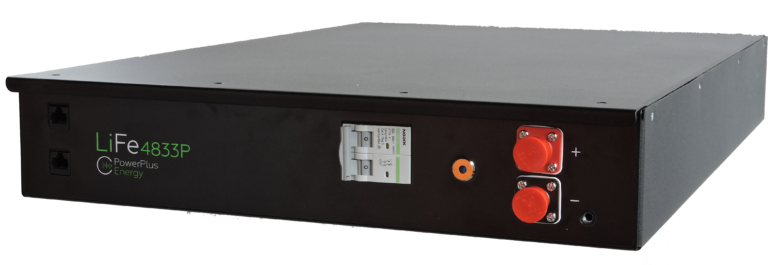
Made by an Australian energy company, LiFe Premium is a well-rounded battery. It had fast charging ability, high efficiency, and an already built-in compatible inverter. The premium P series offers a nominal capacity of 2.2- 3.3 kWh with a DC voltage range of 25.6-128V. The battery also tries to minimize hazards by utilizing the Lithium Ferro Phosphate technology which also helps to increase the efficiency (greater than 96%) and the lifespan of the battery. However, the battery series is yet to be certified and then be available to countries other than Australia.
Puredrive- Pure Storage AC Battery
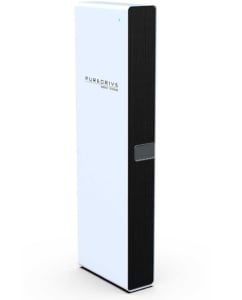
Pure Storage has a maximum capacity of 10kWh, uses Lithium-ion Phosphate technology, and has a peak output of 350A. Furthermore, it has a high inverter efficiency of 95%. It is also important that the company provides free software updates along with ongoing technical support. The battery is ideal for residential usage as it can be installed both indoor and outdoor, in addition to this, it can be used as a smart grid or for backup as well.
The product also has a proper monitoring system that displays real-time and historic data, which can be accessed through the company portal. In this case, the company has very reputable customer service that immediately helps customers regarding the technical issues faced, overall, the battery is a good investment.
Buy Lifepo4 Home Battery Backup
Pure Drive Hybrid
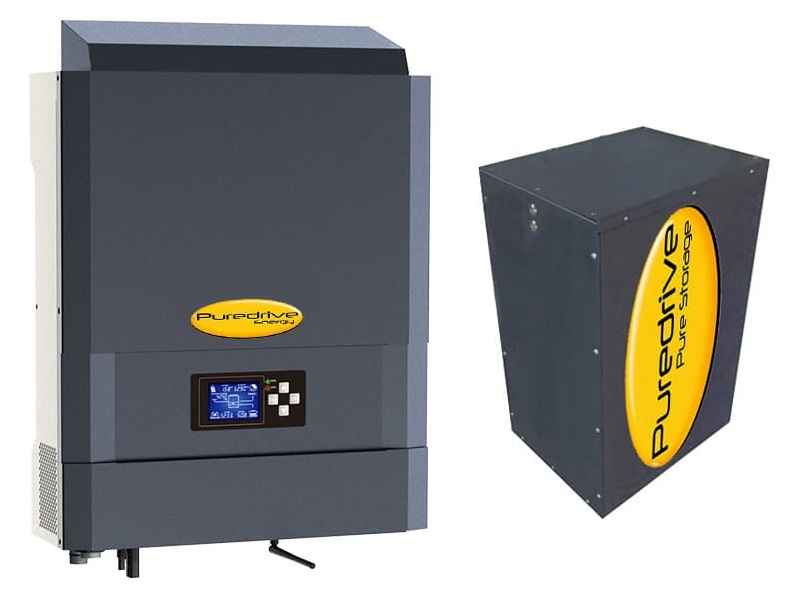
This module's most interesting aspect is its hybrid inverter, the inverter accommodates different energy sources, (from the grid and solar panel) and deals with any fluctuation in the current. Therefore, the battery can provide self-consumption, time-based, and backup operations as well. It is also able to provide special power to special devices in case of a sudden power outage.
The battery is smaller in size, with a total capacity of 4.8 kWh and a usable capacity of 4.4 kWh. However, in terms of inverter capacity, it has the same efficiency as that of Pure Storage and also has a high peak power of 6kW. 30% of the energy that is generated by the solar panel is utilized in real-time while the other 70% is stored for later use, while in the case where there is no real-time absorption, the battery’s storage rises to 85%.
In addition to this, the battery product has a monitoring portal depicting real-time and old consumption data and the company provides free updates for the product as well.
Buy Lifepo4 Home Battery Backup
Samsung SDI ESS BMS
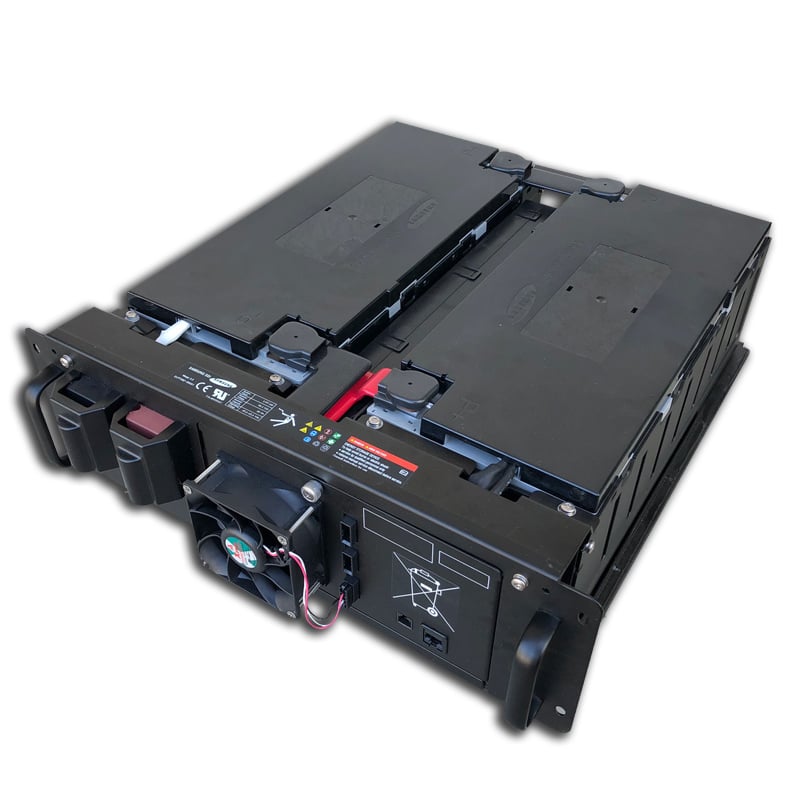
Samsung is the most popular and upcoming company in terms of solar batteries. Their batteries have high solar density and long durability since it has a warranty of 6000 cycles.
The battery has a capacity of 4.8 kWh and has a built-in inverter that is suitable for residential purposes. The battery uses Lithium-Ion technology due to which it has less weight, higher durability, and a relatively fast charge and discharge rate. The product is smaller in size as well, so it can easily be placed anywhere within a home.
Buy Lifepo4 Home Battery Backup
Nissan xStorage
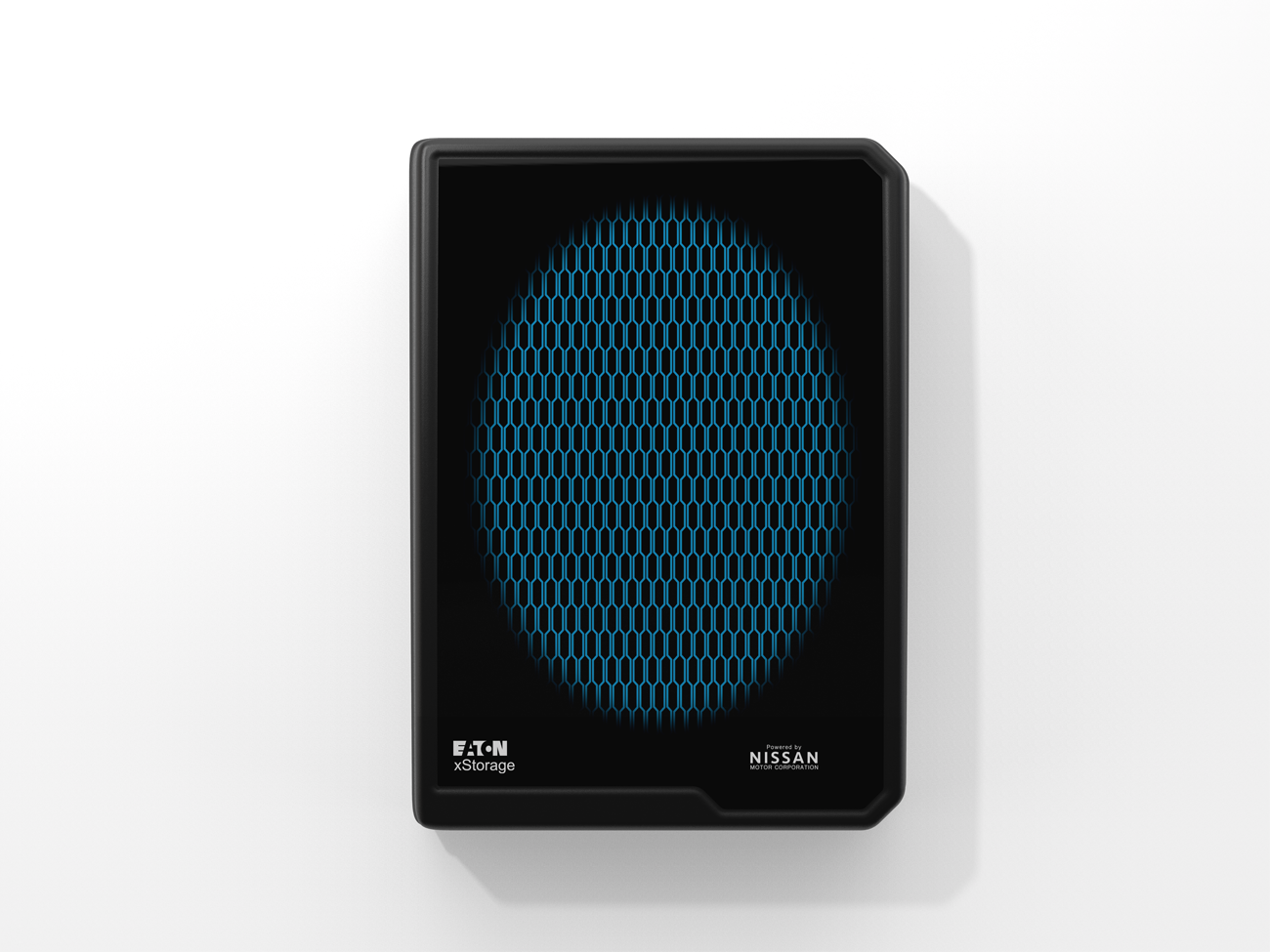
Nissan a well reputable car company, joined hands with Eaton to develop xStorage, to provide its customers with a more sustainable and efficient energy source. xStorage has all the vital parts needed to store solar energy in a single unit, moreover, it is reliable and very affordable for households.
The battery is able to charge from the grid in addition to the solar panels and can discharge back to the grid as well. The xStorage home battery pack has a total capacity range of 4.2-10.08 kWh. The smaller ones, 4.2 kWh and 6 kWh use the Lithium-ion technology, while the highest capacity battery uses the Nickel Manganese Cobalt technology that is used to provide a DC voltage ranger of 74.4V to 98.4V.
However, the xStorage has a warranty of 5 years, other batteries have higher warranties. In addition to this, xStorage only provides critical backup in the case of emergencies or power outages, while Powerwall provided complete backup. In comparison, Tesla Powerwall seems to be a better option.
Buy Lifepo4 Home Battery Backup
Enphase AC Battery
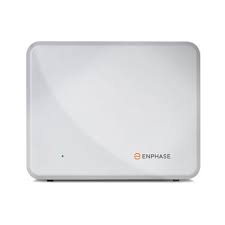
Enphase Solar is an American Solar based energy company that came into existence in the year 2006.
The Enphase AC battery is a simple, reliable, modular, and safe product that allows its customers to provide energy for themselves and become less dependent on the grid. With a total capacity of 1.2kWh, the battery has three different settings, self-consumption, time-based consumption, and export power limiting. Although the total capacity seems to be very low, one can add as many batteries as one requires- nominally up to 14 batteries.
The company provides a 10-year warranty or a 3650-cycle warranty on these batteries, at the end of the warranty period, the efficiency is estimated to be at 80%.
Similar to other batteries, the Enphase AC battery also has a monitoring device and an app called Enlighten Manager and My Enlighten monitoring options, that are used to supervise the consumption of energy.
The battery must be installed indoor and can only be wall-mounted. The battery is reliable, safe, and flexible in the way that it allows you to install as many batteries as you require, in this way capacity is fully utilized without being wasted.
Buy Lifepo4 Home Battery Backup
Sonnen Eco Gen 3
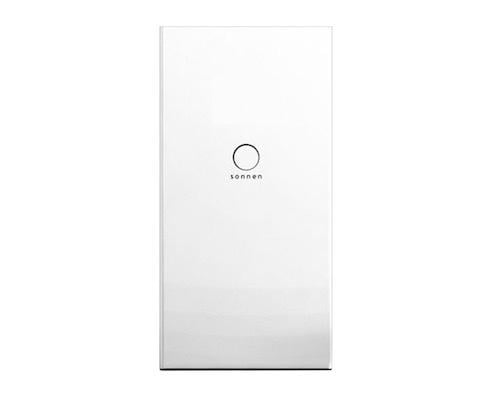
Sonnen was first found in 2010, it was the top European supplier of home systems throughout the world. However, due to the growing industry resulting in the increased competition, the company decided to expand its business by outsourcing in Australia and California.
Their battery products are very similar to Tesla Powerwall. However, Sonnen offers a large variety depending upon its specifications. According to its total capacity Sonnen offers, 5 kWh, 7.5 kWh, 10 kWh, 12.5 kWh 15 kWh, 17,5 kWh, and 20 kWh batteries, all of them have a depth of discharge equal to 80%.
Furthermore, the batteries are AC coupled and provide the same operating modules of Powerwall. However, the only disadvantage is that the Sonnen Eco can not provide backup services as efficiently as the Powerwall. In order to get the backup service, customers will have to install an additional device, a backup box for this purpose. The backup box will at the time of power outage detect issues with the electricity supply and then proceed to supply energy from its own battery.
Overall, the battery is quite good, however, it has two issues, it can only perform its best under certain weather conditions, and secondly, it is only best for residences that experience blackouts rarely due to its need for an additional backup box.
Powervault 3
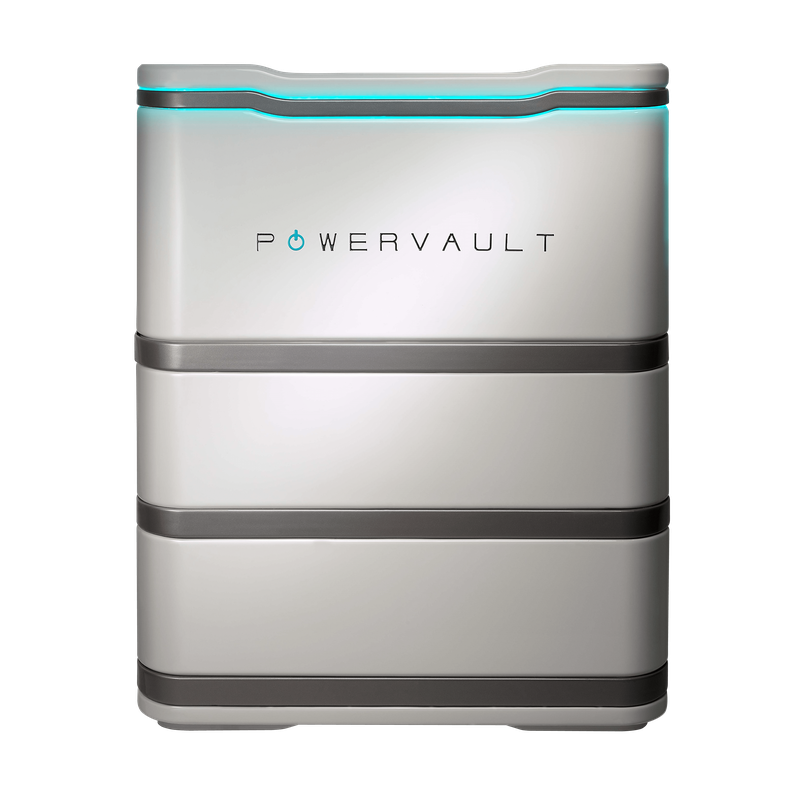
Powervault offers the safest, reliable technology designed to provide the best sustainable energy for extensive use. The batteries are recyclable which perfectly adds to the environmentally friendly agenda. Moreover, the battery does not defuse gases into the environment because of proper sealing, this also means that it does not require maintenance.
The battery is available for different capacity demands starting from kWh to 20 kWh, all batteries are designed to have 100% depth of discharge and can provide a maximum charge of 6.6 kW per second. The smaller capacity batteries have a peak output of 7 kW per second while the higher ones have a peak capacity of 11 kW per second.
However, despite the great capacity and relatively high charge, the battery’s efficiency at the end of the 10-year warranty period is 70% which is a bit alarming. In addition to this, monitoring of energy consumption is available, but it is only available for subscribers- which means a customer will have to pay separately to avail of the service.
Buy Lifepo4 Home Battery Backup
Powervault 3 Eco
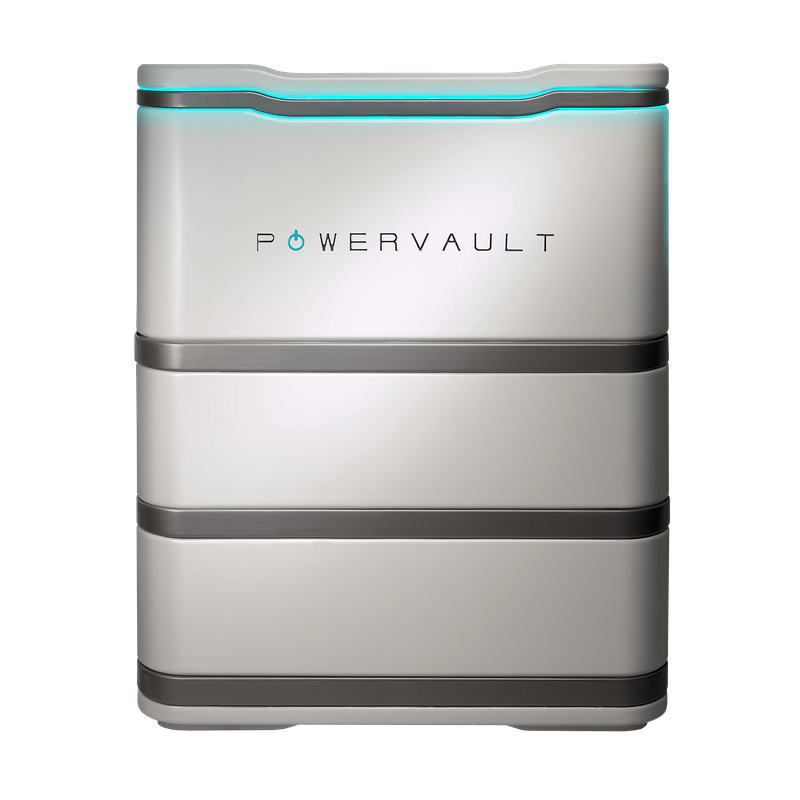
Powervault 3 Eco is a more economical version of the original PowerVault, it only offers three different capacity batteries ranging from 4 kWh to 8 kWh. There is little difference in other specifications as compared to the original product, but the major difference is in the warranty and battery technology. The eco version uses the Lithium Manganese Oxide technology while the former one used lithium-ion technology. Secondly, the Eco version offers only a 3-year warranty with zero maintenance.
Overall, the PowerVault products are easy to install but they still have some long-term concerns.
Buy Lifepo4 Home Battery Backup
Moixa Smart Battery
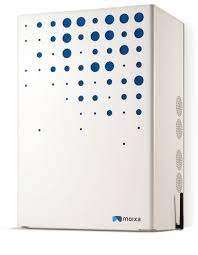
Moixa is a UK brand that is fully determined to reduce carbon emissions by turning to renewable energy sources instead of fossil fuels. Through their efforts of research and development, with Moixa products not only will you be able to reduce 1.2 tons of carbon footprint per year but will also save money as well.
Moixa improved its battery by upgrading its capacity from 2-3kWh to 4 kWh in its latest model, and also improved the operating temperature as well. However, there was a significant downgrade in its warranties cycle which dropped from 10,000 cycles to 4,500 cycles. This can be nullified by the fact that the product offers a lifetime with Gridshare, which means that the consumer will in fact receive monetary benefits upon using the battery.
Buy Lifepo4 Home Battery Backup
Top Solar Batteries Without Built-in Inverters
LG Chem Resu
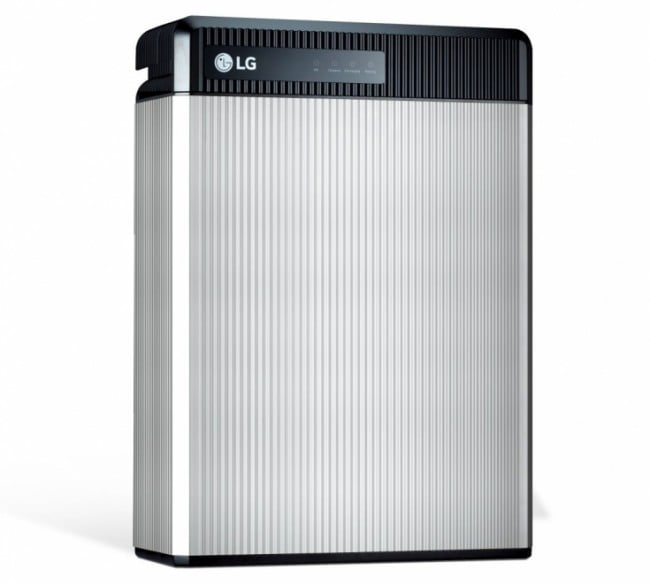
Although LG batteries do not have inverters incorporated into their batteries, LG batteries are the most compatible battery in the industry. The company has recently exceeded its highest capacity battery; the Resu battery now has a capacity range of 3.3-16 kWh with a usable capacity range of 2.9-11 kWh.
The Resu battery is perfect for domestic use as it is safe, reliable, and compact. The battery helps to save your budget by reducing your electricity bill; furthermore, it offers self-consumption and emergency functions as well.
Overall, the battery has impressive design and specifications, however, the 10-year warranty efficiency of Resu is comparatively lower than others. The batteries mentioned previously have high efficiency of nearly 90% yet Resu has an expected efficiency of more than 60%.
Buy Lifepo4 Home Battery Backup
Generac PWRcell
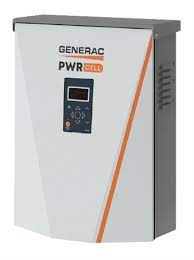
The PWR cell is the latest battery that was introduced in 2021 and deserves to be placed among the top 5 batteries due to its large capacity, scalability, and efficiency.
The PWRcell has two models, the smaller and the larger model. The smaller model offers a total usable capacity of 8.3 kWh while the larger offers around 17.1 kWh.
The battery has built-in inverters and has a mode for export limiting in addition to self-consumption, time-based consumption, and backup. On a continuous level, the battery can provide up to 3.5-6.5 kWh. The battery’s capacity can be further increased by adding a total of 10 PWRcell batteries to the system.
Buy Lifepo4 Home Battery Backup
Dyness Power Box

The Dyness Power box presents four different modules with sleek designs. The modules range from 2.4-9.6 kWh in total capacity. To ensure safety the battery used the Lithium-Ferro Phosphate instead of the Lithium -ion. This allows the battery to provide better and more sustainable source of energy that can be seen by the 6000 warrantied cycles. The battery has a Battery Monitoring System built in to ensure further protection against any discrepancy. However, since the system does not have a built-in inverter, it suggests a variety of different brands that would support the system perfectly.
Buy Lifepo4 Home Battery Backup
Sungrow SBP4K8
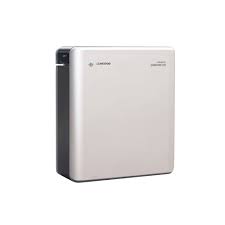
Sungrow is one of the highest-ranked batteries in the field of energy storage. The battery provides a 4.8 kWh of full capacity, and a nominal voltage of 51.58V. It has a high charging rate (47 A) and discharging rate (48 A), in addition to this, the battery has a remarkable charging efficiency greater than 95%.
Due to easy installation and online firmware updates, installation and maintenance costs are reduced. However, the only shortcoming of the battery is that the battery is compatible with Sungrow’s Hybrid inverters only.
Buy Lifepo4 Home Battery Backup
BYD B-BOX LV
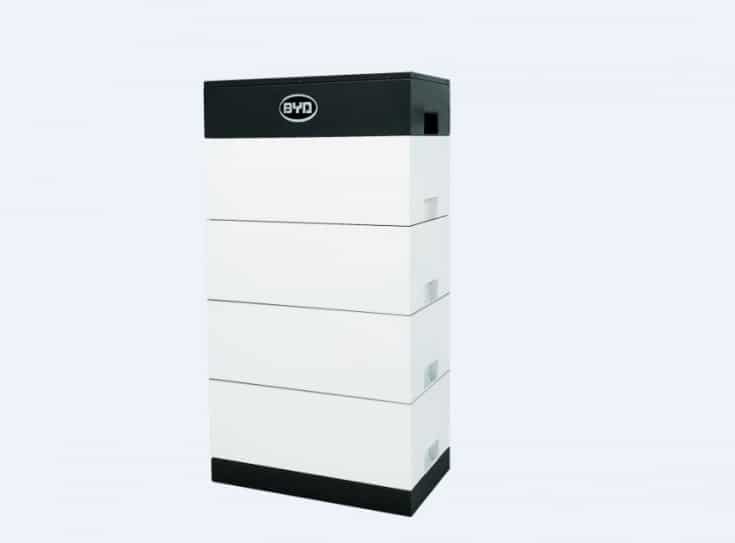
BYD stands for Build You Dreams; BYD is an old Chinese manufacturing company that first came into being in 1995, it was in 2003 that the company started to manufacture batteries for residential and commercial use.
The company introduced its new B-Box LV battery, which has a range of choices depending upon its capacity and other features. Under the LV Battery, there are 4 different modules namely, Battery box L3.5, L7, L10, and L14 with total capacities of 3.5 kWh, 7 kWh, 10 kWh, and 14 kWh respectively. The maximum power provided by these batteries is 3, 6, 9, and 10 kW. To achieve the highest amount of current, a maximum of three storage units can be attached in parallel to get a total power of 42 kWh.
Since the battery does not have an attached inverter, the company suggests using the following inverters: GOODWE, SMA, Victron, and many others.
Buy Lifepo4 Home Battery Backup
OVO Solar Store
OVO is a new corporation, its sole purpose is to bring in environmentally friendly and sustainable power options. Currently, OVO is partnering with different famous companies such as Nissan to produce efficient batteries to store solar energy.
Buy Lifepo4 Home Battery Backup
Solax Triple Power 5.8
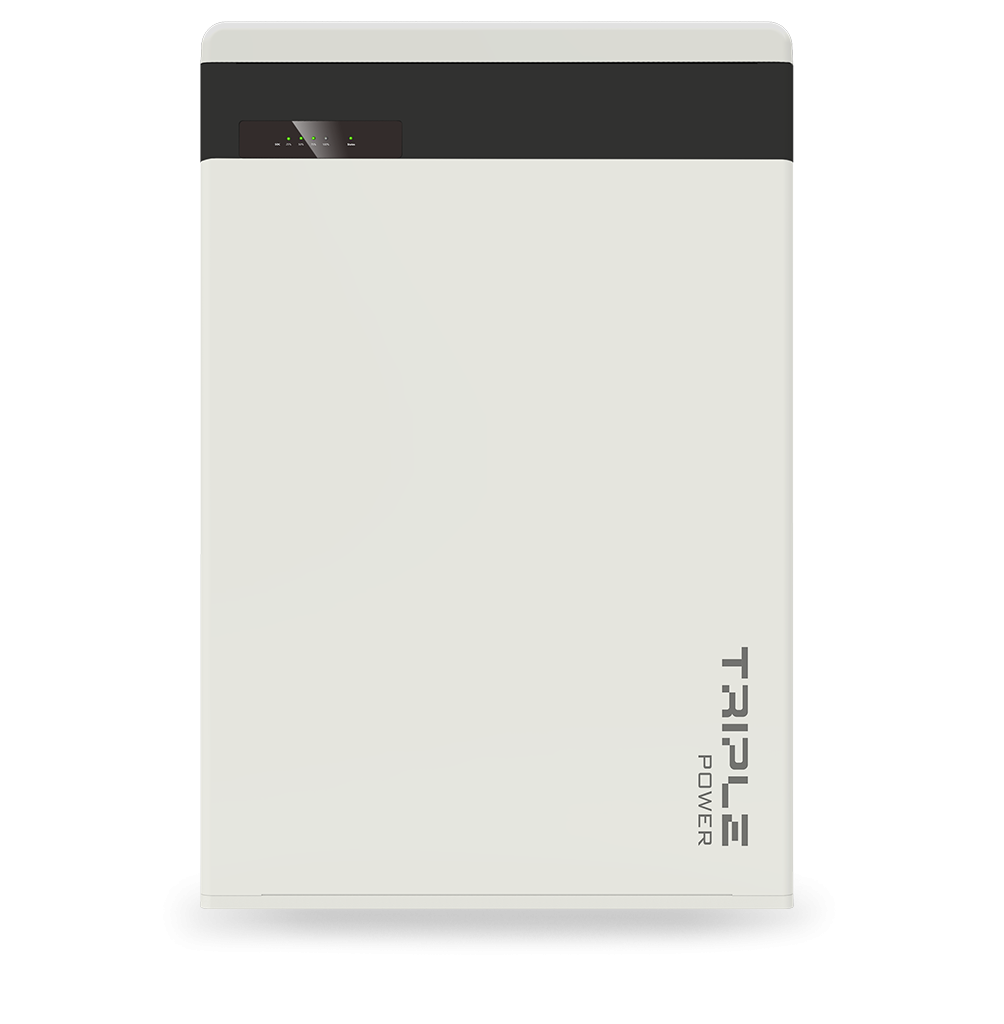
Solax provides its customers with a highly efficient and practical solution to storing energy. The new solax triple power is a solar battery with a total capacity of 5.8 kWh, with its maximum power being 4 kWh. The batteries use Lithium-ion technology and are highly efficient as they have a 99% charge efficiency along with, a 95% battery roundtrip efficiency. It is designed in a way that it can be installed indoors and outdoors, and can be mounted on a wall or simply placed on the floor.
The main disadvantage of this battery is that not only does it require separate inverters, but the triple power 5.8 is also only compatible with Solax’s own inverters. Secondly, even though the battery offers self-consumption functions and backup functions, it is not completely Grid free.
Buy Lifepo4 Home Battery Backup
VARTA PULSE 6
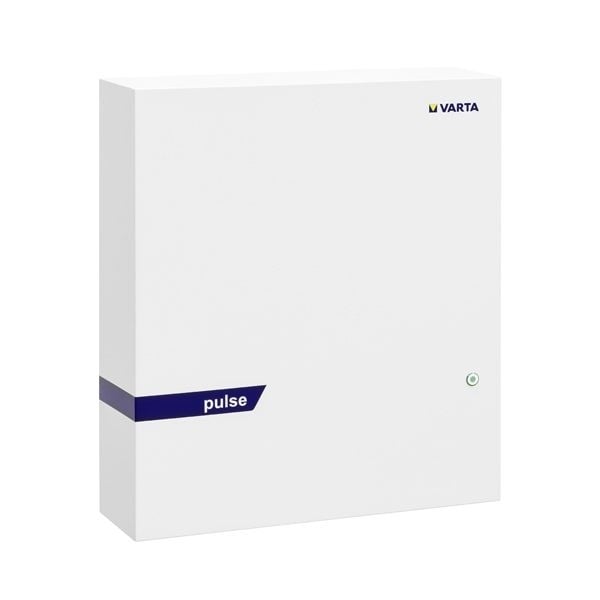
Varta pulse's main feature is that it is compatible with all types of solar panels. With a total capacity of 6 kWh and a usable capacity of 5.9 kWh, Varta Pulse 6, has an efficiency of 90.5%. The battery is a maximum power charge of 2.5 kW, however, the warrantied cycle only consists of 4000 cycles, this may primarily be because of the chemical used in the battery, Nickel Manganese Cobalt. Although NMC is an advanced technology, the heat produced by it significantly reduces the durability of a device.
The product’s capacity can also be increased by adding more batteries to the system; currently, this facility is only available within Europe but the company is planning on expanding this service to other countries as well. The installation of the battery is very easy and takes only an hour to do so.
Buy Lifepo4 Home Battery Backup
Small Scale ESS
Universal 10|4 Residential Storage System
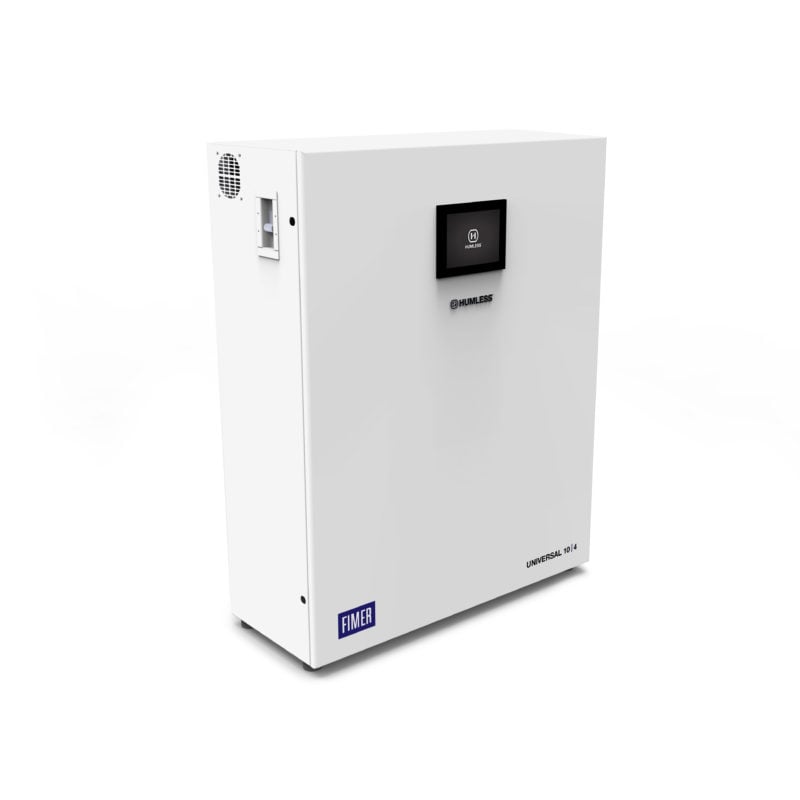
Humless Universal specifically designed this energy storage system to be a residential or small-scale-based system. This battery has a capacity of 10kWh using the LiFePO4 technology. Although it is a small-scale product, it has all the functions of a top battery system, self-consumption, time-based consumption, and backup facility are available in this ESS. However, it must be bought with an ABB inverter to convert DC into AC for domestic use.
Buy Lifepo4 Home Battery Backup
Electriq PowerPod 2

PowerPod 2 is the updated version of PowerPod 1. The original version used NMC while the latest version used the Lithium Iron Phosphate technology which gives it a longer lifespan. PowerPod 2 offers three different models with usable capacities of 10, 15, and 20 kWh. In addition to its high capacity, the battery also has high battery efficiency of 96.6%. Software is also available to monitor the functioning of the battery. The battery supports both On and Off-grid features, but in case of an electrical emergency, the battery is only capable of storing energy that would last for a few hours only. If residents with PowerPod face regular occurrences of power outages, they will have to install more batteries to fulfill their backup requirement.
Fortress Power eVault 18.5
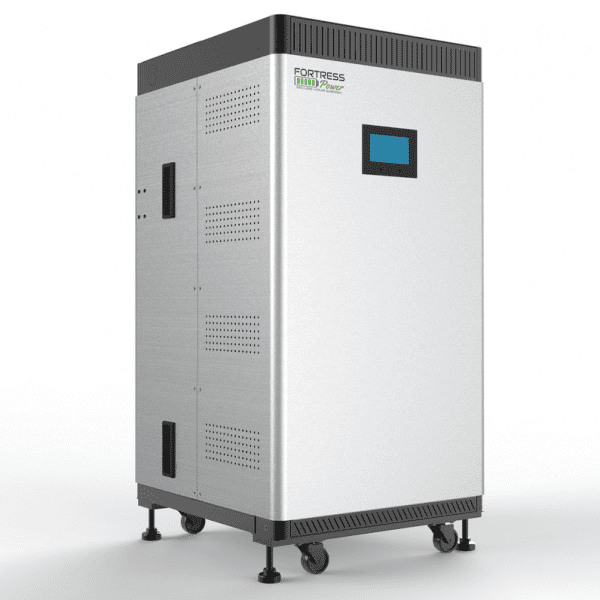
The Fortress Power eVault was introduced in the year 2020. The battery has impressively high specifications that are targeted to meet the residential requirements. It has a usable capacity of 18.5 kWh and has a round trip efficiency of 98%. The battery is certified in safety measures and can provide self-use, backup, and time of useful functions. It can provide a peak power of 9.6 kW and a continuous power of 8.4 kW; however, it provides current in DC, therefore requires an inverter. Moreover, the disadvantage is that it has a deterioration rate of 7% and has a 5-year warranty for countries other than the US and Canada.
Buy Lifepo4 Home Battery Backup
Goal Zero Yeti Tank and Link Expansion System
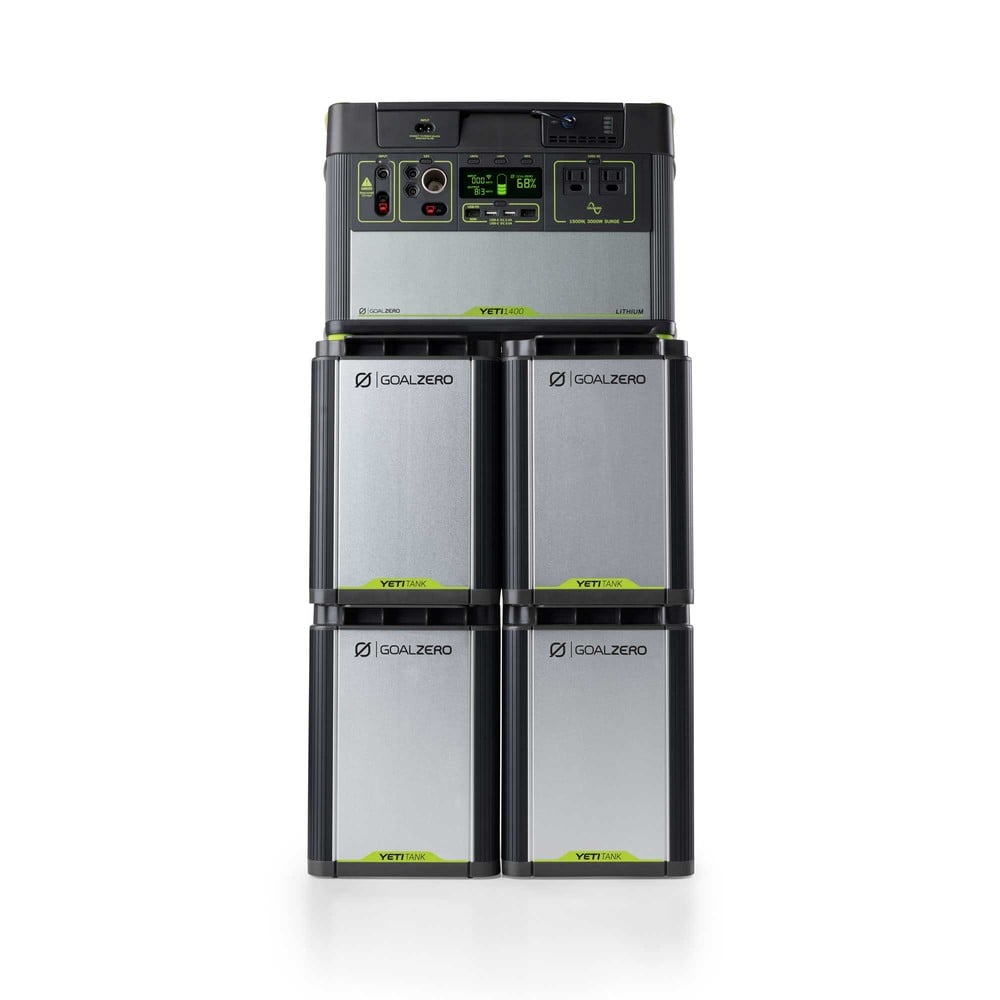
The Yeti Tank is a fairly recent battery, with a 1.2 kWh capacity. Instead of lithium-ion, this battery product uses the AGM Lead Acid technology. However, solar energy is not the only way you can recharge this battery, one can easily recharge this device using any vehicle in the absence of solar energy by switching to car mode. In addition to this, if one wants to increase the capacity of the battery, they can add more batteries to the Goal Zero system. To do this there is no restriction on what type of battery it should be, the Yeti Tank is compatible with other batteries made by different technology.
Buy Lifepo4 Home Battery Backup
NeoVolta NV14
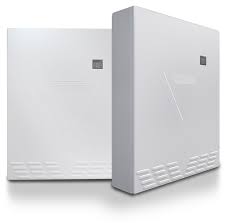
NeoVolta NV14 was introduced in 2020, the battery is AC DC Coupled therefore, there is no need to buy an additional inverter. It has a total capacity of 100 Ah and can provide energy of 14.4 kW, furthermore, it has a high charge efficiency of 94%. Purposely made for domestic use, the batteries can also be added to increase their capacity up to 24 kW. With its Lithium-ion technology, the battery provides a higher lifespan of 6000 cycles, surpassing its other competitors.
Buy Lifepo4 Home Battery Backup
Panasonic EverVolt ESS
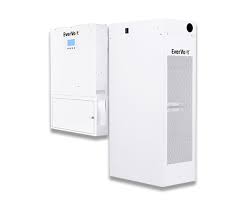
Panasonic is a top brand name and with its amazing solar panels, people have high expectations for its batteries as well. Panasonic’s Evervolt batteries consist of two major modules, the standard, and the plus module.
The standard module has a maximum capacity of 11.4 kWh and can provide a continuous output of 4.6 kW. However, in case of a blackout or electricity outage, this module can only supply electricity for up to 6 hours.
On the other side, the plus module has a higher capacity of 17.1 kWh. The battery can provide a 5.5 kW power output continuously, and has a backup that can provide electricity for as much as 9 hours.
Both modules have the same warranty of 10 years, at the end of the warranty period, the battery is expected to have 60% of its original capacity. To increase the capacity, Evervolt allows you to connect 12 batteries to increase its capacity to a maximum of 34.2 kWh.
Overall, considering its warranties, capacities, size, efficiencies, and brand name, the product is worthy of investment.
Buy Lifepo4 Home Battery Backup
Rolls 6-volt S6 L16-HC
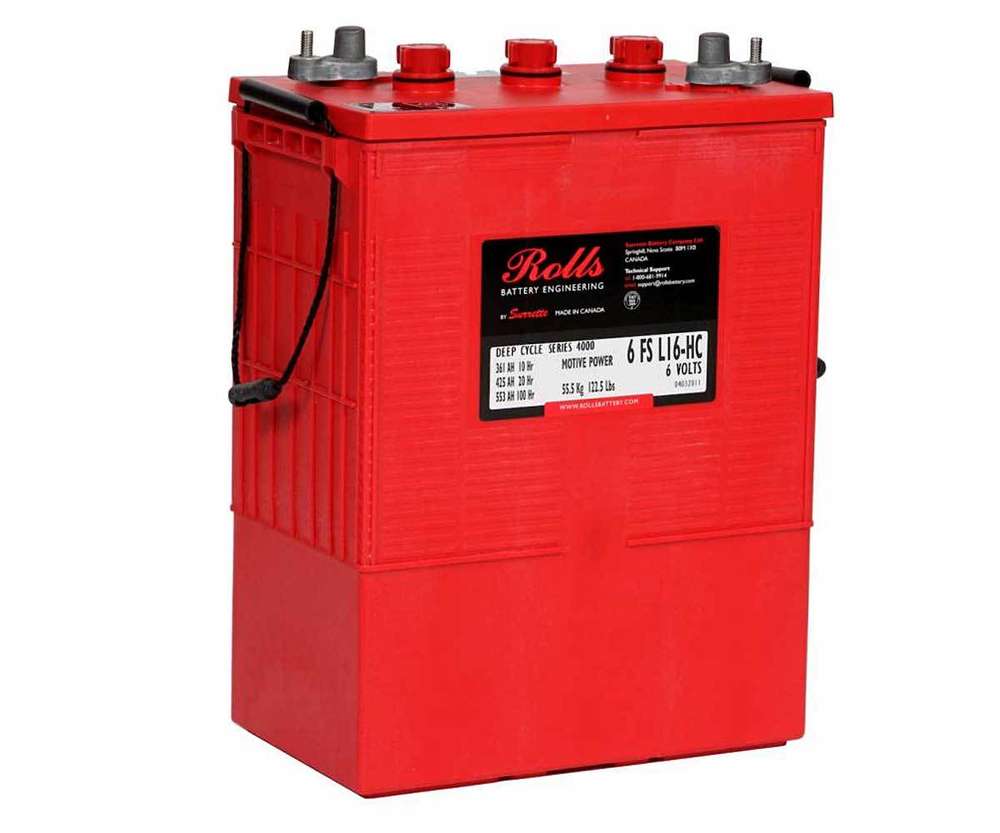
The Rolls brand strives to offer the best quality battery products that are reliable and offer large capacities. The Rolls 6-volt S6 L16-HC is a recent product that has an incredible cycle life, and a capacity of 512 Ah. The battery provides a maximum output of 85A. In its backup function, the battery has the capacity to supply electricity up to 861 minutes or 14.35 hours. However, the only drawback that can be observed in this battery is its warranty period. Good batteries from well-reputed companies offer a warranty of 10 years, yet the Rolls offer a warranty on their product for only 3 years.
Buy Lifepo4 Home Battery Backup
Schneider Electric Conext XW Inverter/Charger
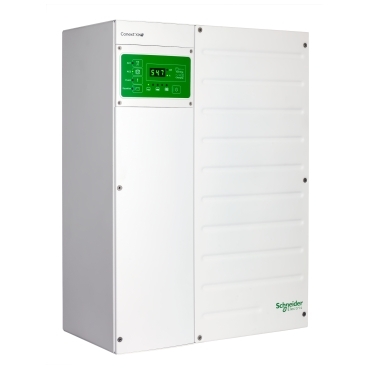
The Schneider Electric Conext XW charger promises to bring in high benefits upon its investment. The product is easy to install, manage and is flexible enough to split into a total of three phases. In addition to this, it does not require an inverter due to its AC DC-coupled system.
Conext has three different modules, with a continuous output range of 4-6 kVA but all three versions have an average efficiency of 95%. The system has the capability to configure into one phase to three total phases; the split-phase allows 4 parallel units while the three-phase configuration can have 2 units per phase. The warranty of the product, however, differs from region to region with a maximum warranty period of 5 years.
Buy Lifepo4 Home Battery Backup
SimpliPhi AccESS accompanied with Sol-Ark
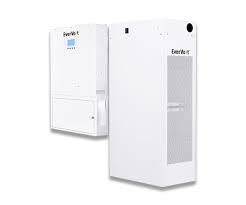
SimpliPhi introduced its new energy storage system called AccESS which is best when used with its own Sol-Ark inverter. The battery used the Lithium- Ferro phosphate (LFP) technology to provide a 19 kWh of total capacity and a usable capacity of 15.3 kWh. With the help of the Sol-Ark inverter, the system provided on-grid and off-grid applications.
The system is great because it offers a warranty of more than 10,000 cycles for 10 years. Although the battery maximizes its functionality by offering self-consumption and time-of-use rates, its backup service only allows for critical backup instead of overall backup.
Buy Lifepo4 Home Battery Backup
Trojan Battery Company Trillium
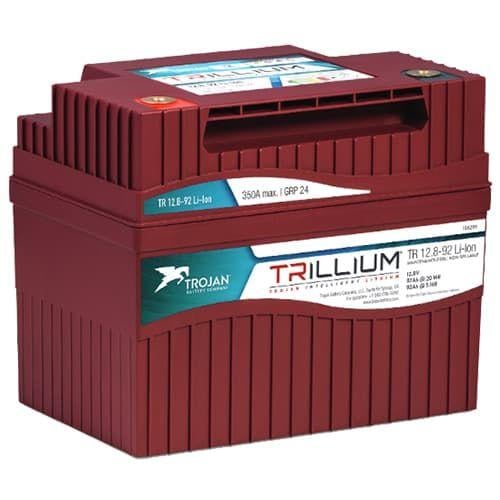
Trillium is the latest battery model from the Trojan Battery Company that uses the deep cycle Lithium-Iron Phosphate technology. By using deep-cycle Lithium-Iron Phosphate instead of nickel or cobalt technology, the battery attempts to improve the average lifespan and the safety of the battery while at the same time increasing its output range. The expected lifespan of this model is higher than 5,000 cycles and has a reserve capacity of 220 minutes. It has a maximum capacity of 12.8 volts and can produce a maximum output of 1.4 kW.
Buy Lifepo4 Home Battery Backup
Large Energy Storage Systems
Ampt String Optimizer
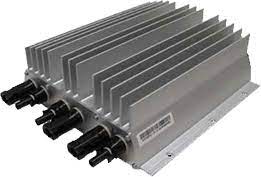
Ampt introduces a new way to improve the costs and the overall performance of the batteries. The batteries use string optimizers that significantly reduce the cost of the battery while simultaneously improving the long-term performance. By using the Ampt mode of the optimizers, batteries observe a 60% improvement in their output. The optimizers cut the costs through low-cost DC-coupled storage.
The string optimizer’s V750-12 Series has a maximum input of 750V and a maximum output of 650 to 750 V. Therefore, using Ampt’s string optimizer will give you a high return by lowering your energy costs, increasing your energy output and product durability.
Buy Lifepo4 Home Battery Backup
KORE Power Mark 1
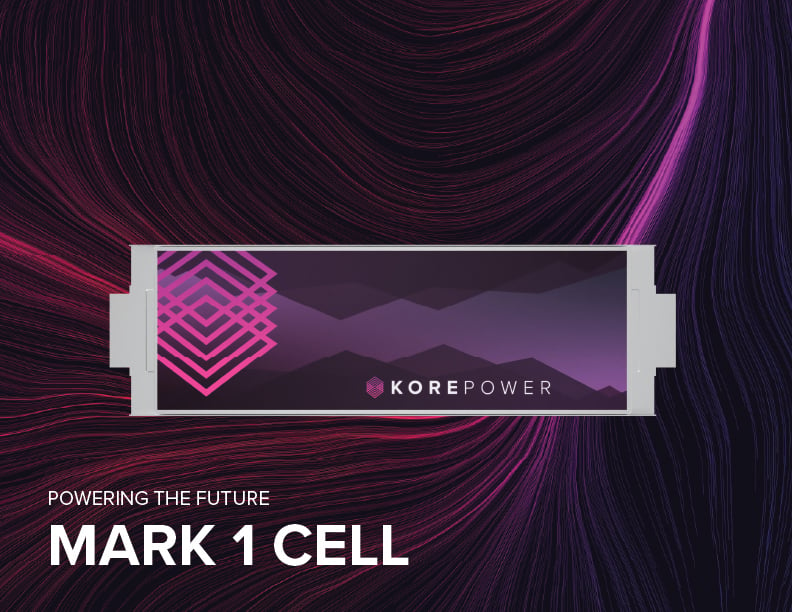
Developed by KORE Power, the Mark 1 Energy Storage Rack was built for high-level energy demands. The battery surpassed all of its safety standards to provide an incredibly high energy output of 110.7 kWh and a voltage range of 762-1170V. Even more so, the company promises to provide a warranty for 15 years on their products.
Battery Accessories
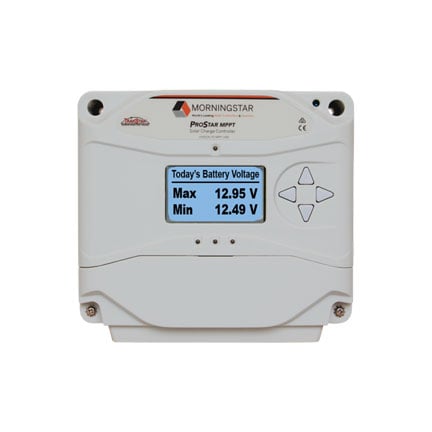 Morningstar Corporation ProStar MPPT charge controller
Morningstar Corporation ProStar MPPT charge controller
The device has been proven during about twenty years of usage and is constantly being improved. It is intended for off-the-grid photovoltaic systems of ≤ 1.1 kW. All configurations feature TrakStar tech and load controls. The innovative thermal engineering technology avoids the necessity of a cooling fan, which maximizes the efficiency and prolongs life. The controller is offered in 25-ampere and 40-ampere options, up to 120 Voc.
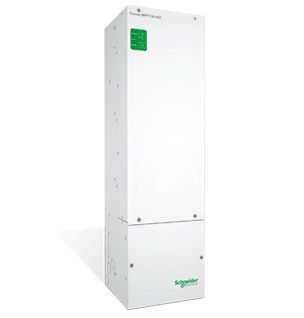 Schneider Electric Conext MPPT 80 600 Charge Controller
Schneider Electric Conext MPPT 80 600 Charge Controller
The high-performance device is designed for DC coupled solar-plus-storage systems. It is quick to install and has lowered BOS costs. The controller is suited for 600-volt photovoltaic systems, can be integrated with XW Pro, comprises a shade-tolerant maximum power point tracking algorithm and optimal battery charging profiles.
Top Solar Energy Storage Products
Below we have listed the top batteries and energy storages for 2020. Solar energy storage products can be categorized into full storage systems (with DC/AC inverters incorporated) and batteries alone (requiring inverters separately). Besides, storage products can be grouped into utility-scale systems (as a rule, with a capacity exceeding 100kWh) and small ESSs for home use. We have also included a couple of top-ranked accessories for energy storage solutions in the list.
| Supplier | Capacity | Technology | Cycles Warrantied | Warranty | Weight | Operating Temperature | Dimensions (mm) | Mounting | Powercut backup** | Cost* |
|---|---|---|---|---|---|---|---|---|---|---|
| Tesla Powerwall 2.0 | 13.5 kWh | Lithium-ion | n/a | 10 years | 125kg | -20°C to 50°C | 1150 x 755 x 155 | Floor/Wall | Yes | $9905+ |
| LG Chem Resu | 3.3 – 9.8kWh | Lithium-ion | 6,000 | 10 years | 31 – 99.8kg | -10°C to 45°C | 452 x 403 x 120 to 744 x 907 x 206 | Floor/Wall | No | $3295+ |
| Sonnen Batterie Eco | 2 – 16 kWh | Lithium-ion | 10,000 | 10 years | 71 – 273kg | 5°C to 40°C | 702 x 641 x 221 to 1839 x 641 x 221 | Floor/Wall | Yes | $5642+ |
| Powervault 3 | 4.1 – 20.5 kWh | Lithium-polymer | >6,000 | 10 years | 129 – 329 kg | 0°C to 35°C | 120 x 98 x 25 to 205 x 98 x 25 | Floor/Wall | No | $5943 – $18581 |
| Enphase | 1.2 kWh | Lithium-ion | 7,300 | 10 years | 25 Kg | -20°C to 45°C | 390 x 352 x 220 | Wall | No | $2132+ |
| Samsung SDI | 3.24 kWh | Lithium-ion | 6,000 | 5 years | 95kg | -10°C to 40°C | 1000 x 267 x 680 | Floor | Yes | $4388+ |
| Moixa Smart Battery | 2-3 kWh | Lithium Ion Phosphate – LiFePO4 | 10,000 | 10 years *Lifetime with GridShare | 3 – 49kg | -5°C to 40°C | 505 x 345 x 245 | Wall | No | $3699– $4326 |
| xStorage by Nissan | 3.6 – 6 kWh | Lithium-ion | n/a | From 5 years for 4.2kWh system, 10 years for 6kWh system | 135kg | 0°C to 30°C | 1230 x 890 x 220 | Wall | No | $3761 |
| BYD B-BOX | 2.5 – 409 kWh | Lithium Iron-Phosphate | n/a | n/a | 88 – 202kg | -20°C to 55°C | 1000 × 600 × 600 | Floor | No | $2131+ |
| OVO Home Energy Storage | 4.2 – 10 kWh | Lithium-ion | n/a | n/a | 96 -122kg | n/a | 650 x 300 x 1080 | Floor | No | n/a |
| Solax Battery | 3.3 – 6.5kWh | Lithium-ion | 3,000 | 10 Years | 26 – 44kg | n/a | 330 x 450 x 110 | Wall | Yes | $2407+ |
| Varta Pulse | 3.3 – 6.5kWh | Lithium-Ion | 10,000 | 10 Years | 45 – 65kg | -5°C to 30°C | 330 x 450 x 110 | Wall | No | $4487+ |
| Puredrive ESS | 4.8 kWh | LiFePO4 Lithium ion Phosphate | 6,000 | 10 Years | 79kg | -20°C to 60°C | 740 x 740 x 310 | Floor/Wall | Yes | $4378+ |
| Puredrive Hybrid | 4.8 kWh | LiFePO4 Lithium ion Phosphate | 6,000 | 10 Years | 69kg | -10°C to 60°C | 710 x 390 x 250 | Floor | Yes | $2172+ |
| *not included installation costs | ||||||||||
Buy Lifepo4 Home Battery Backup
See also: Storage News | Top Energy Storage Companies | Top Energy Storage Batteries Stocks | Best Solar Batteries
